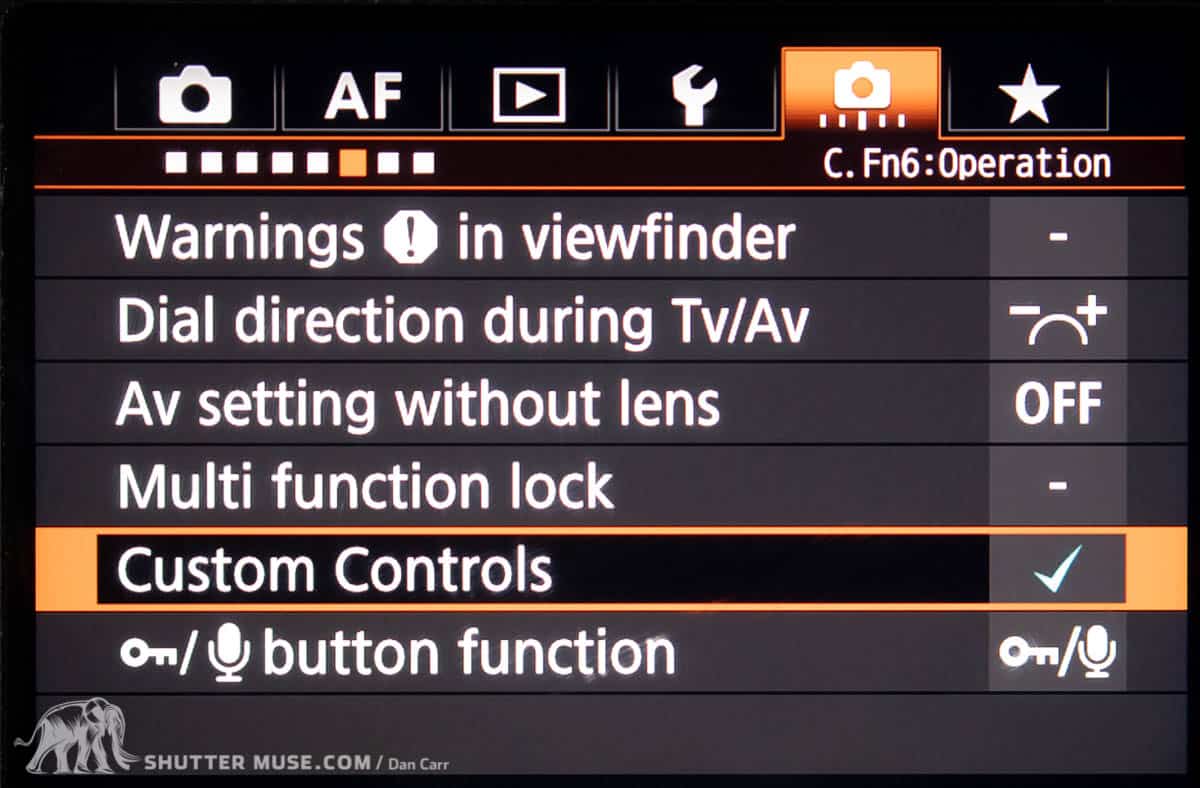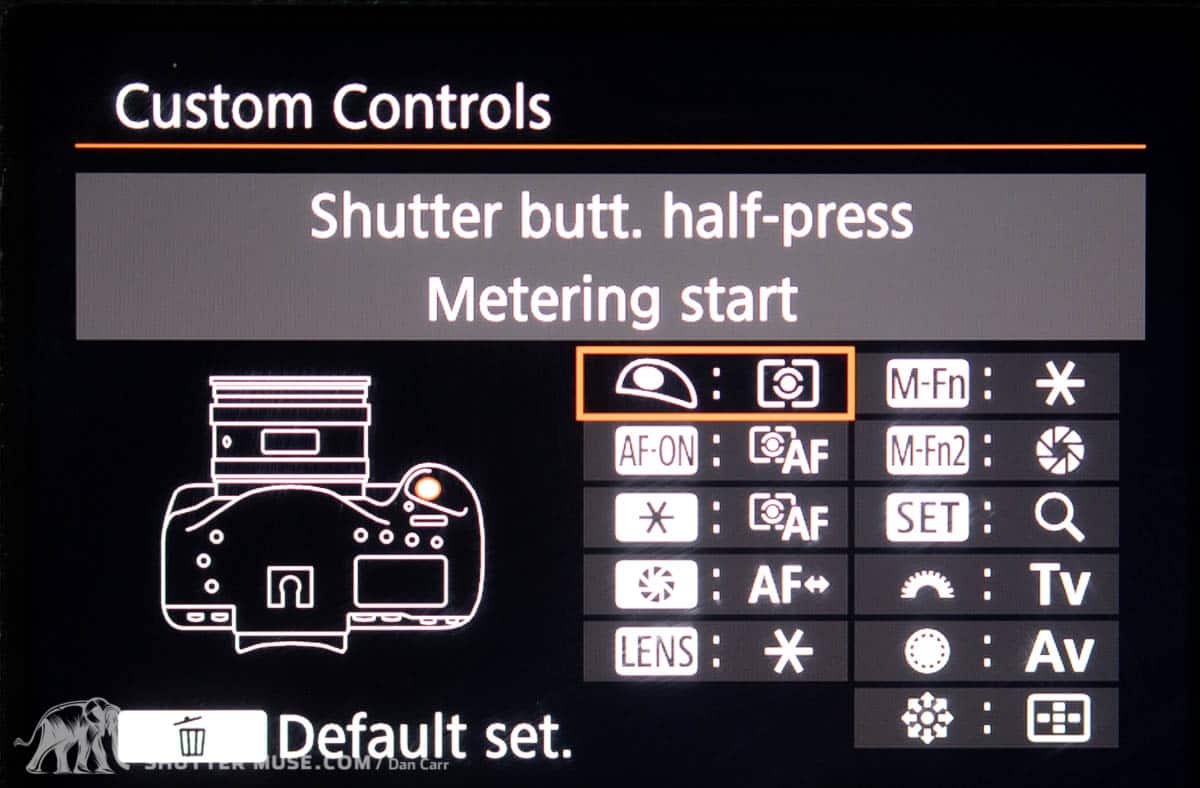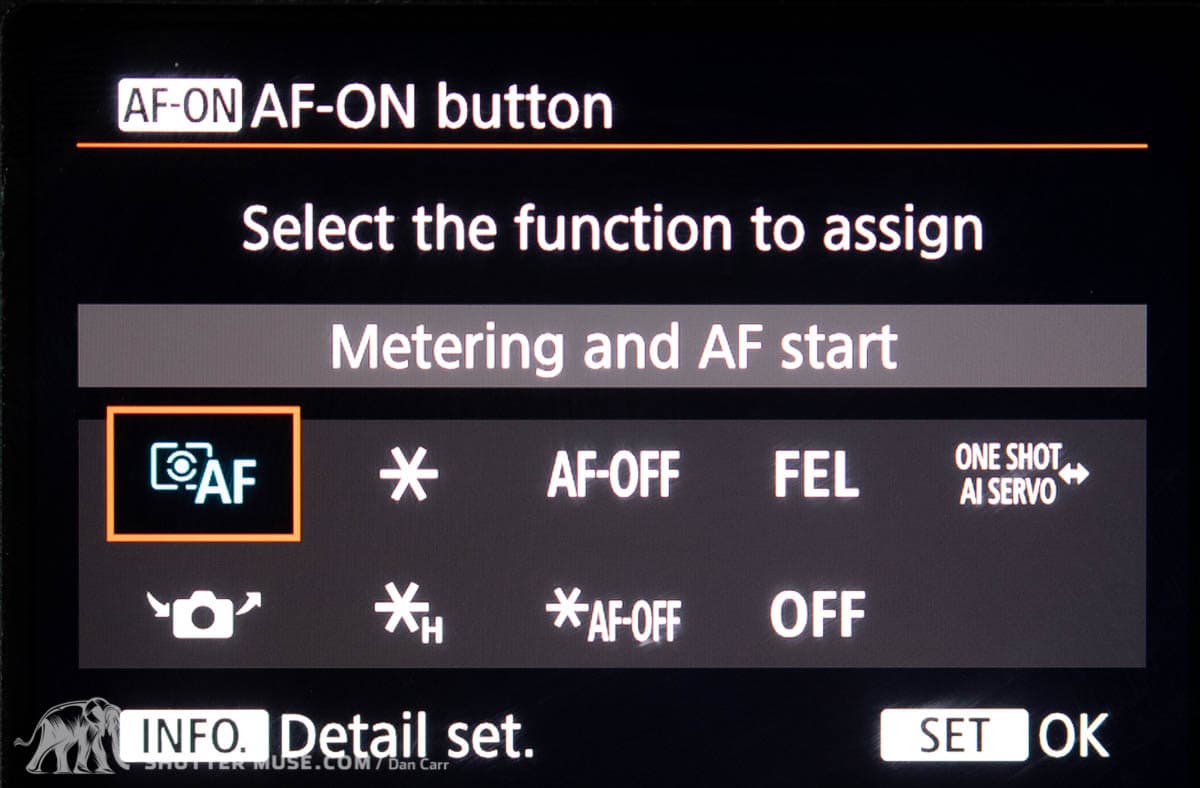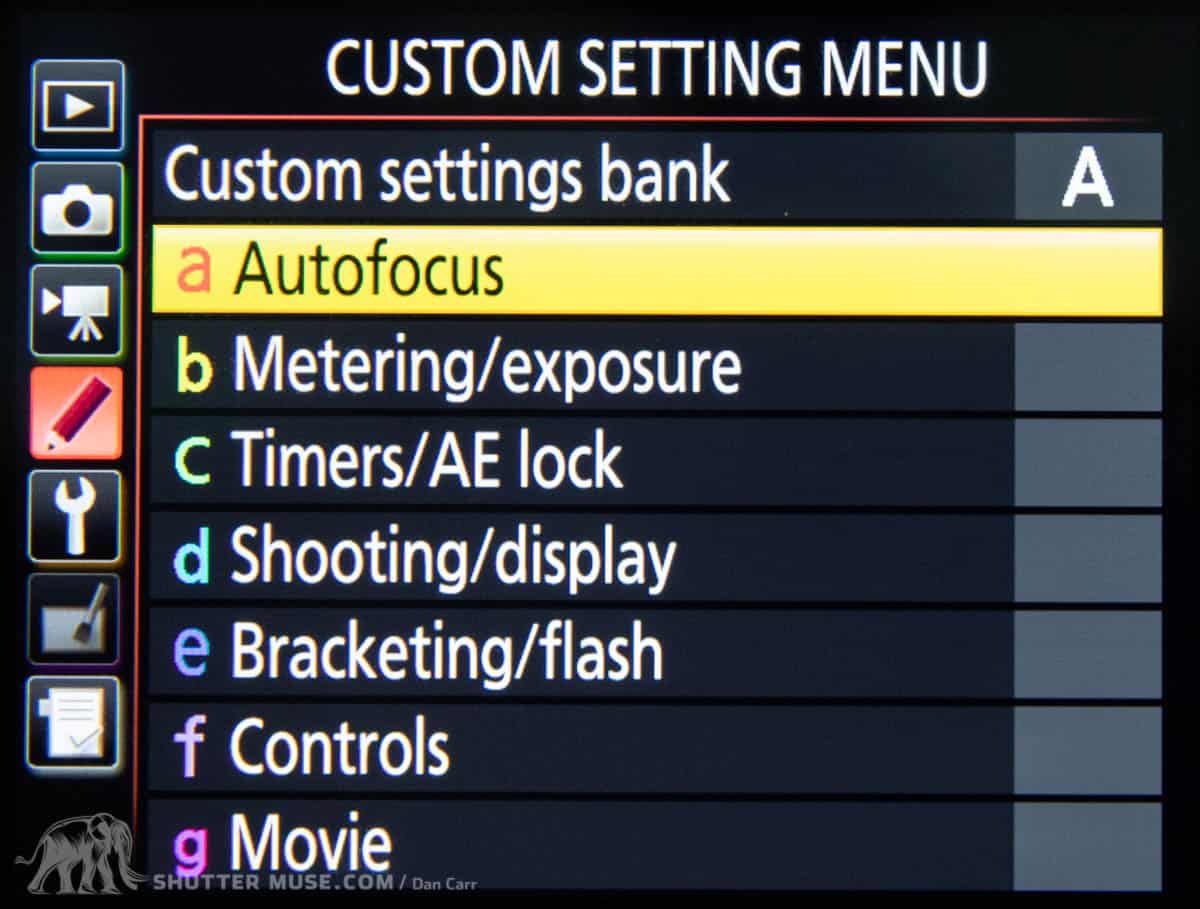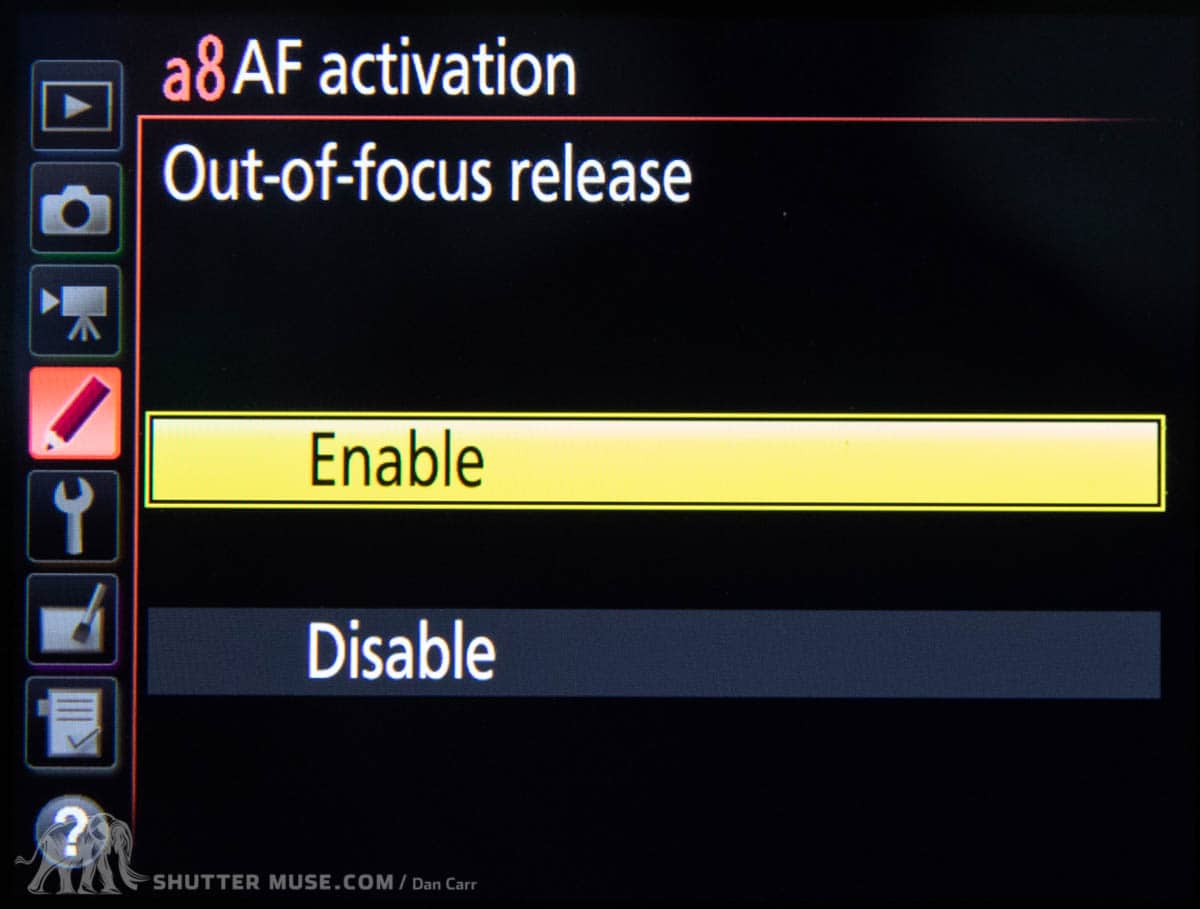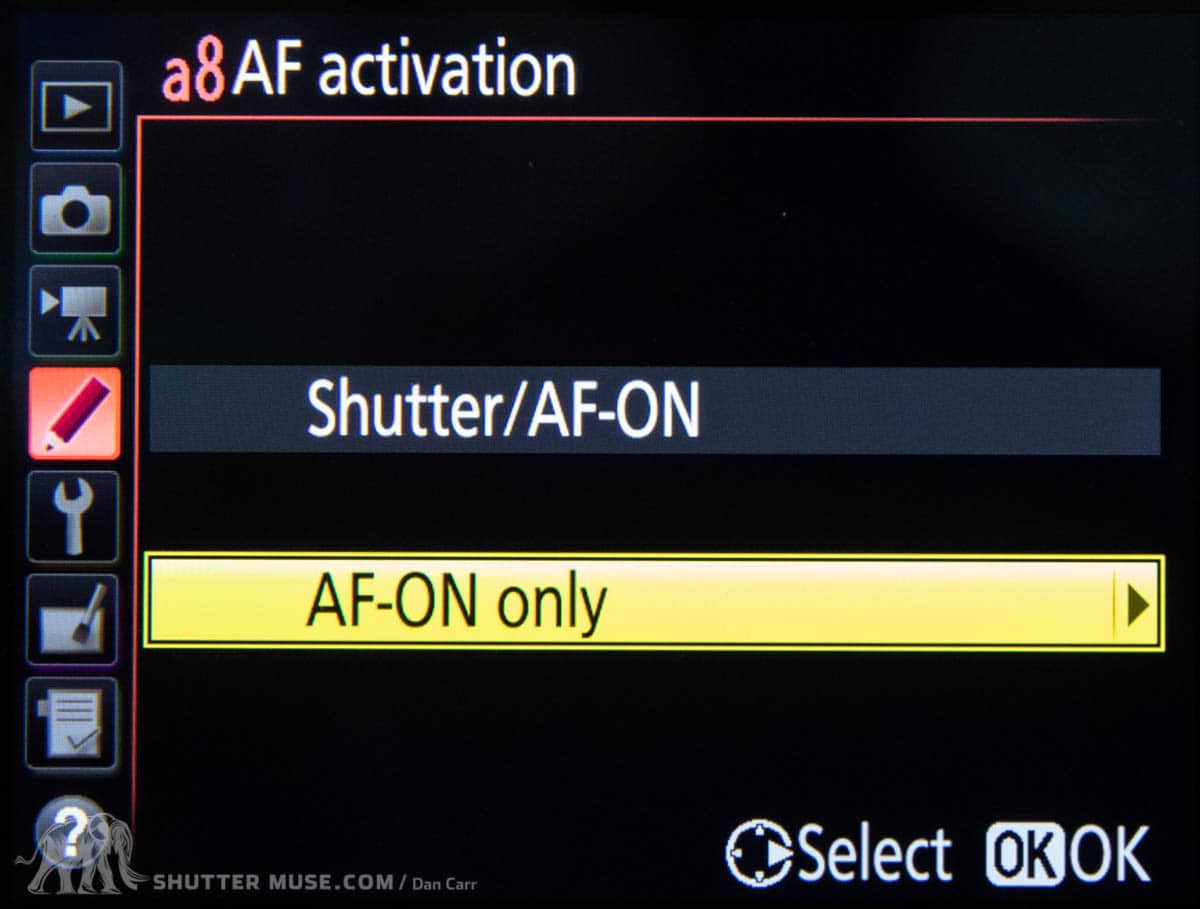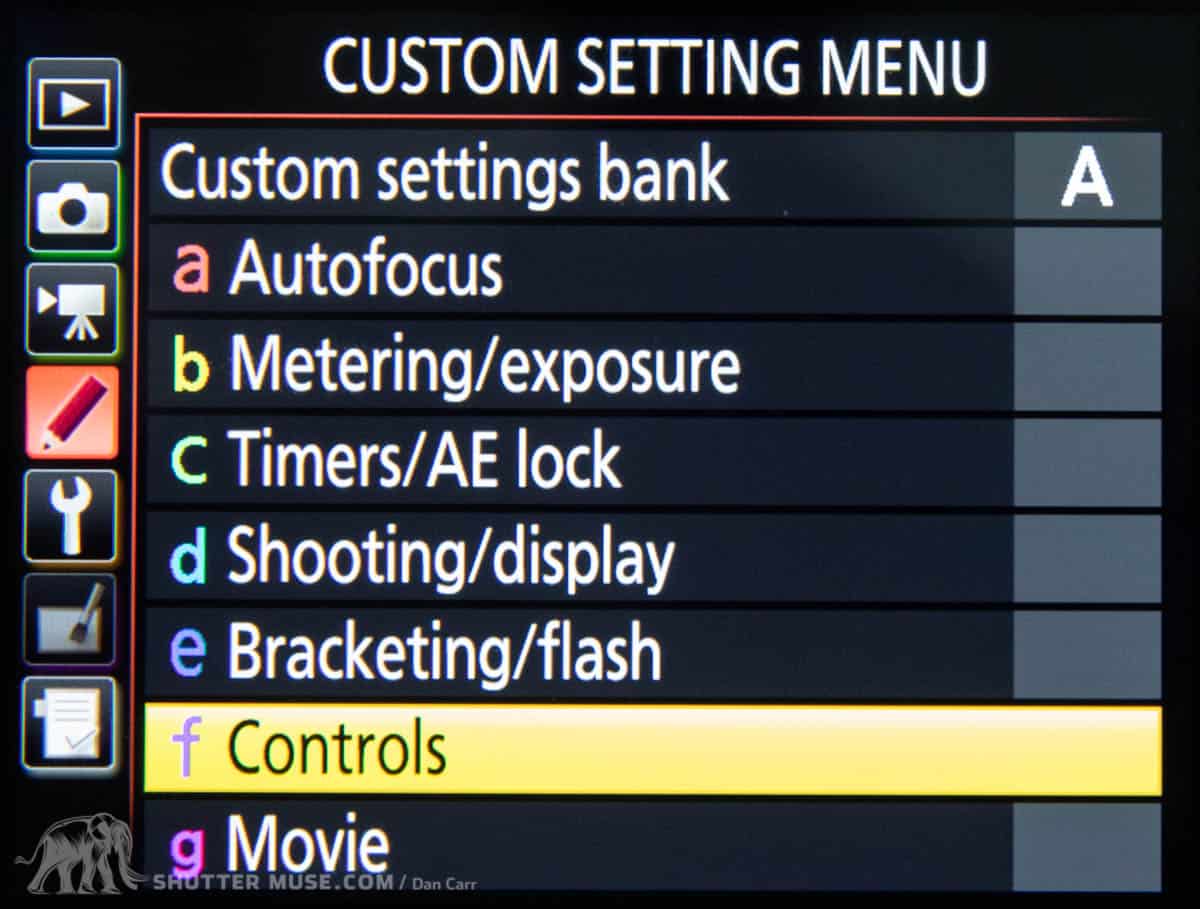Camera Foreground Focus Funny Picture Skier
Sometimes when I post a photo on my social media channels I'll include the EXIF data and comment that the photo was captured using back button focus. This usually prompts a question or two from people who want to know why you would use this technique, and how to set it up on their camera.
In this article, we're going to take a deep dive into this topic and examine the problem with the standard half-press focus method, and the pros and cons of using back button focus instead.
When I first discovered this technique it really helped to improve my photography, but the funny thing is that at the time I just started doing it "because all the pros do it", rather than having a solid understanding of why you might want to do it. Though my approach at the time was misguided and full of youthful impatience, I had nonetheless stumbled upon a setting in my camera's menu that had the power to both improve the sharpness and the composition of my photos.
Table of Contents
- What is Back Button Focus
- How Does Back Button Focus Work?
- Why Use Back Button Focus?
- Compositional Flexibility
- Easier Tripod Shooting For Landscapes
- Manual Focus Override For Complex Foregrounds
- Pre-Focus Technique For "Must Not Miss" Moments
- Focus Consistency for Panoramas
- Improved Accuracy In Tough Lighting Conditions
- Remote Cameras
- Liveview Accuracy
- Macro Photography and Focus Stacking
- Improved Portrait Moments
- Faster AF Mode Switching
- Can Your Camera do Back Button Focus
- How to Set up Back Button Focus
- Canon Cameras
- Nikon Cameras
- Sony Cameras
- Fuji Cameras
- Dual Back Button Focus
- Canon Cameras
- Nikon Cameras
- Is Back Button Focus for Everyone?
What Is Back Button Focus?
Most people are used to the default behaviour of all cameras: Give the shutter button a half-press to focus on the subject, and then fully depress the button when they are ready to take the shot.
With back button focus, you separate the two functions of focusing and taking the photo. Autofocus is assigned to a button on the back of the camera, and the shutter button simply takes the shot.
How Does Back Button Focus Work?
If you have single-shot autofocus selected as your AF method, pressing the back button will focus once, just like a half-press of the shutter button before. It doesn't matter whether you press the back button and release it, or continue to hold down the back button, it will only focus once on the selected AF area.
If you have some kind of continuous focus mode selected (AI Servo, Continuous AF – name depends on the brand you are using), the autofocus will start when you press the back button, and it will stop as soon as you release the button. In other words, you have to hold the back button down while you are tracking a moving subject, for autofocus to stay engaged. It isnot a press once to engage, press once again to disengage, system.
Why Should You Use Back Button Focus?
I've seen the sceptical look on people's faces in my workshops when I tell them about this, so if it's your first time hearing about the technique I can imagine you might feel a bit uncertain about it. On the face of it, pressing two buttons instead of one just sounds more complicated. Bear with me though, because there are many good reasons why the majority of professional photographers use this technique. In fact, I would bet that the vast majority of people who try this technique will never go back to the old half-press method afterwards, as long as they dedicate a necessary, but a small amount of time to adjusting to it.
Let's look a few different scenarios where back button focus can save the day:
Compositional Flexibility
If you don't use back button focus it can be easy to get stuck in a compositional rut. Yes, you can use the focus recompose method of putting the AF point on the subject, half-pressing the shutter button and recomposing the frame before you take the shot, but that's tedious if you are really experimenting with a lot of different compositions of the same subject. You'll be constantly swinging your camera back and forth, focussing and recomposing. You might not realize it, but it's probably stifling your creativity and limiting your experimentation. Some people just give up entirely with the standard half-press focus recompose method and only end up composing images where the subject falls directly under one of the AF points. If you do this, you're leaving so many compositional options on the table because the array of AF points only covers a small amount of the frame.
Providing your subject isn't moving around too much, with back button focus you can focus just once with a single push of the back button. After that, as long as you don't move from your position, thus maintaining the same subject-to-camera distance, you can rapidly alter the position of your subject within the frame and take multiple shots in quick succession. I test different compositions out all the time with this method, and in just a second or two you can capture a huge variety of compositions by simply moving your lens around and taking another shot, without needing to refocus at all. It simplifies the mechanics of the whole process and allows me to think more about the artistic side of things.

I find that this method not only promotes more overall compositional freedom and experimentation, but it also helps me perfect extremely tight compositions that are reliant on several different objects in the frame being in exactly the right place. If you are constantly having to make large camera movements to use the focus recompose technique, then you keep putting yourself back to square one with these difficult compositions. Since I'm using back button focus, I can focus once and then really concentrate on just making extremely small compositional changes in my viewfinder, sometimes shifting the camera just a single millimetre left and right to alter things.
Easier Tripod Shooting For Landscapes
For landscape photography, it's vital that you focus on the right part of the scene so that the depth of field from your chosen aperture, delivers sharpness throughout all the most important elements of the landscape. When you work from a tripod, it makes constant focusing and recomposing even more tedious if you're taking multiple photos and have the camera set up in the default half-press mode. Most people probably focus once on an element in their scene and then switch the lens to manual focus so that they can take multiple photos without the camera trying to refocus on a different part of the scene.
With back button focus, this isn't a problem. Just place your AF point over the area in your scene where you want the plane of focus to fall, and press the focus button once. Now you can carefully position the camera using the head of your tripod, and press the shutter button whenever you like, without having to mess around with switching the lens to manual focus.
Manual Focus Override For Complex Foregrounds
If your subject is hidden behind a complex foreground element, the fastest way to get the shot is sometimes to forgo autofocus altogether and manually focus using the ring on the lens. If your camera is set up in the default half-press mode, this would require you to also change the focus switch on the lens from Auto to Manual, otherwise, the camera would refocus the lens when you go to press the shutter button.
With back button focus, that doesn't happen because the camera doesn't adjust the focus unless you press that back button. You can safely adjust the focus with the manual focus ring and then press the shutter button right away to get the shot. Not only does this save time, but it also ensures that you don't forget your lens has been switched to manual mode, thus causing you to miss the focus on some piece of sudden and unexpected action.
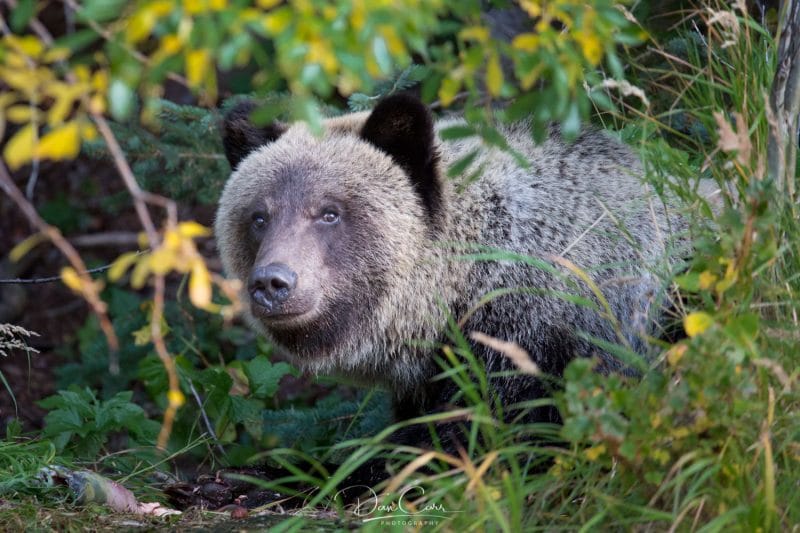
Pre-Focus Technique For "Must Not Miss" Moments
This is a technique that is used by many professional sports photographers for situations that absolutely cannot be missed. I did this kind of work professionally for many years, and I would say that I used it for more than 75% of my action sports photography work. When the path or trajectory of someone is predictable, there's really no need to be autofocusing when you take the shot at all.
Let's take a look at a skier hitting this huge jump as an example. The skier's path is entirely predictable to me, and I have positioned myself for a specific composition, knowing where the skier will be within the frame once he is in the air. I know the exact point at which I'm going to take the shot, for compositional balance, and I, therefore, know where the plane of focus needs to be, long before the skier has even begun to ski towards the jump.

If I already know where I want to be focussed, what is the point of adding to the complexity of the situation, and also adding a potential point of failure? What if the camera's AF system decided to get confused by all the reflected light from the snow, and decided to hunt for focus at the exact moment I pressed the button?
That would be a disaster, and the shot would be blown! I have shot many action sports moments where the athlete has very clearly said to me "I'm only going to do this one time", simply because they are often risking their lives. When you know you only have one shot at it, you need to think about removing all potential points of failure from the equation, and sometimes autofocus is one of them.
By having my camera set up with back button focus, I can pre-focus on the scene to place the plane of focus exactly where I know it needs to be, much like you would do for a landscape photo. Then, as the athlete passes into that plane of focus, I just press the shutter button and get the perfect, sharp shot. I don't have to worry about the camera taking too long to acquire focus and missing the moment, nor do I have to worry about placing an autofocus point right on a rapidly moving, sometimes very small target. That in itself is a huge bonus because it means I can carefully frame the composition and keep the camera static, instead of panning with the action and just hoping that a balanced frame will be the result.
It's worth underlining that this technique is the only reasonably reliable way of sharply capturing a rapidly moving subject that has been intentionally framed outside of the area that's covered by your camera's AF point array. The assumption for most beginners is that when any subject is moving, you must shoot in a continuous focus mode, and therefore be able to place at least one AF point over them within the frame. When the AF point arrays of some cameras only cover the central portion of the frame, this greatly reduces your compositional choices! However, by combining back button focus with the carefully planned pre-focus technique I just described, you would easily be able to place a moving subject at the far edge or corner of a frame, should it benefit the composition in some way.
With a large enough depth of field, this actually gives you more freedom than you might expect when working with slightly less predictable paths and trajectories. I have used this technique to photograph extreme skiing in Alaska, where all you really know is where an athlete will ski +- 100ft. If you're working at a great distance, it's quite possible to get a depth of field that will encompass 100ft, meaning you can use the back button to pre-focus on a mountainside ten minutes before the athlete skis down it, and still have confidence in your shot when they decide they are ready to drop into their line.
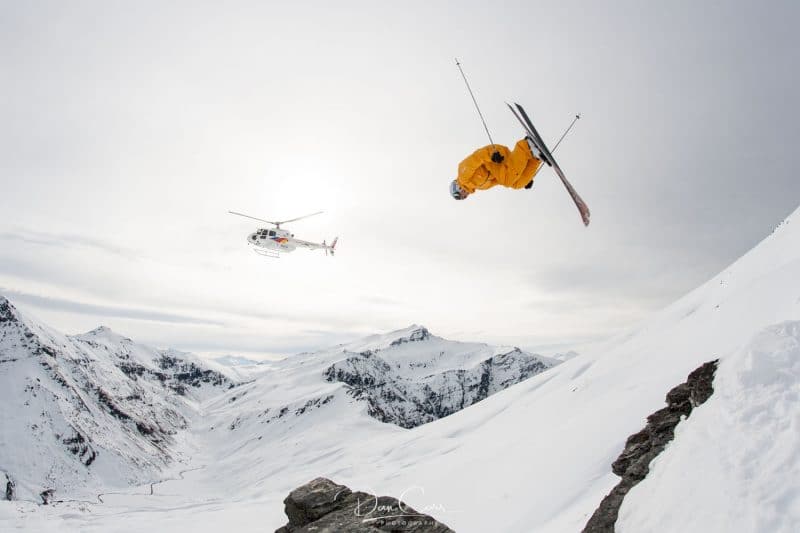
Focus Consistency for Panoramas
When capturing multiple photos to stitch together for a panorama, you need to make sure that the focus distance has been maintained for every shot otherwise the images won't blend seamlessly. Once again, if your camera is still set up in the default half-press focus mode, you'll be forced to mess around with changing the lens to manual focus mode when you need to take your shots for the panorama. If you don't do that, your AF points will fall on objects at different distances for each photo, and your panorama will be ruined.

Back button focus solves this problem again. Just focus once with a press of that button, and then rotate yourself (or camera on a tripod) to capture your panoramic images. You can even take multiple sets of images to make sure you got everything you need, and you still won't have to worry about focusing again as long as you didn't significantly alter your own position. Assuming you are working with a small aperture and a very large depth of field, you still don't need to refocus if you move a few feet back or forth, because that kind of small shift in a large depth of field won't be noticeable. If you need to move left or right, no problem at all! The distance between you and a distant plane of focus isn't going to change.
For example, if I focus on a point that is half a mile away to place my focal plane there, and then move myself 30ft to the left or right, that plane that I focussed on is still half a mile away so there is no need to refocus. When using back button focus, you just press the shutter button.
Improved Accuracy In Tough Lighting Conditions
Autofocus systems have certainly gotten better in the last few years, but it hasn't been an exponential improvement by any means, and there are still times when poor lighting can confuse an AF system and cause it to hunt for focus. The most common occurrences are in extremely low light levels, and when the subject is backlit with a light source directly in the frame.
Assuming your subject isn't moving around significantly, in these situations back button focus is preferable because you only need to acquire focus once, and then you can shoot a number of photos while effectively having your focus locked. Even if the subject is moving, as long as it's a predicable path then we can combine this with the pre-focus technique that was mentioned in the previous section. The photo below is another good example because whilst the cars are moving fast, their path is perfectly predictable, almost to the inch.
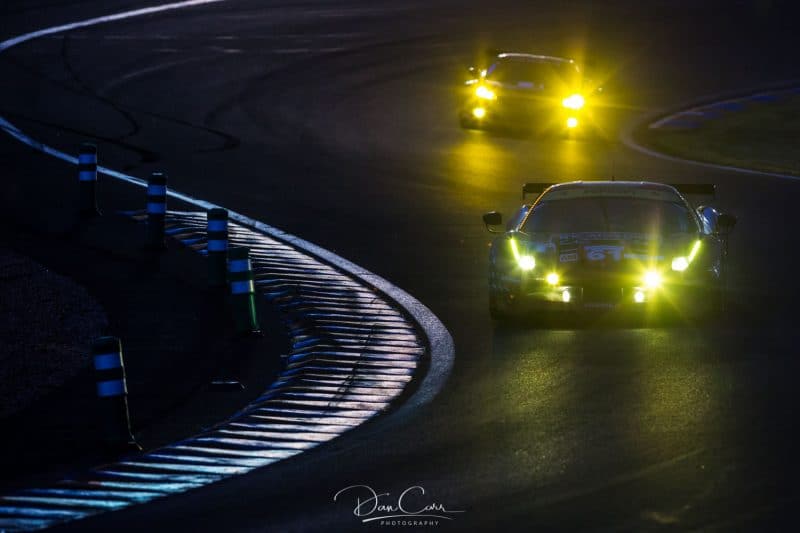
Remote Cameras Need Back Button Too!
If you ever use a remotely triggered camera for sports or wildlife photography, you'll want to make sure that the camera has back button focus enabled. You can't see what the camera is seeing and you can't just hope that the subject falls within the autofocus points. The only way to effectively work with a remotely triggered camera is to carefully compose the framing that you want for your shot, and then pre-focus the lens on the point where you want/hope your subject will be. With a camera set up for back button focus, the wireless remote control of the camera will not cause the camera to blindly try and refocus when you take a shot. With the camera pre-focused, you also don't have to worry about the length of time it would take to acquire focus, and you can simply fire off the photo at the right instant.

Ultra Accurate Focus With Liveview
The invention of the live view function on cameras has allowed us to zoom in using the camera's LCD screen, up to 20x on some cameras, to manually focus on extremely specific areas of the frame. Once again, back button focus technique means that after you have precisely focussed using live view on your LCD, you can simply press the shutter button to take the photo, without worrying about it refocussing and undoing all your hard work.\
Macro Photography and Focus Stacking
Macro photographers will often photograph the same object or scene multiple times whilst altering the plane of focus between shots. This series of shots, all focussed at slightly different distances into the frame, is then blended in Photoshop to simulate a deeper depth of field. Focus stacking requires extremely precise focusing, and will often combine the previously mentioned live view techniques with mechanical tools (focus rails) to allow repeatable results. This would have to be done with manual focus, but with a camera set up for back button focus, the photographer doesn't need to make any changes at all before taking a shot.
Improved Portrait Moments
We've already covered some examples from the world of sports, wildlife and landscape photography, but the versatility of back button focus doesn't stop there. If you're a portrait photographer it can also be a help! Let's imagine that you're shooting a simple studio portrait of someone, and of course, you are concentrating hard on making sure that their eyes are in sharp focus. With the default half-press focus method this means you are either limiting your composition to having the eyes fall directly behind an AF point, or you are constantly employing the focus recompose method. I've seen a lot of people go with this second method, whilst using the usually faster and more accurate single, central AF point. The problem with this is that you are so fixated on constantly focussing and recomposing your framing, that you miss those brief moments of facial gesture and eye contact that can really make a portrait stand out.
When you use back button focus, if you instruct your subject not to step forward, backwards or sway their head around too much, you can get your focus with the back button and then just wait with your finger on the shutter button until you see that perfect moment though the viewfinder. When it happens, the photo can be instant and you've got your shot. Of course, if you are working with an extremely shallow depth of field in your portraits then this does have some limitations, but even then I've got a trick for you: Swaying! When your depth of field is incredibly shallow, ask your model to remain as still as possible, and then adjust your focus not by actually changing the focus of the lens at all, but by swaying back or forward in line with the model. Through your viewfinder, you will be able to see the shifting plane of focus, and when it intercepts with their eyes you know you can shoot. If you're using back button focus, pressing that shutter button will just take the photo and your focus won't be changed. This puts you in control a little more, and you aren't constantly trying to second guess the mode's movement.
Faster AF "Mode Switching"
In many ways, setting your camera up for continuous focus and then using back button focus is giving you the benefits of both a continuous focus mode and a single shot focus mode. When you need a continuous mode you just hold the AF-ON button down whilst tracking your subject, and when you need single-shot focus you briefly press the back button until focus is acquired. For many people, this will negate the need to constantly switch back and forth between those two AF modes using the buttons on the camera. More time saved and less fiddling with buttons between shots always makes the creative process easier.
Does Your Camera Have Back Button Focus?
Before we get started on this, we need to answer this important question. As far as I know, there isn't a camera on the planet that comes with back button focus enabled by default, so it's a feature that needs to be enabled in the menu. Setting it up requires the ability to alter the behaviour of the shutter button, and usually requires assigning at least one custom feature to a button on the back of your camera. Unfortunately, not all cameras allow that level of customization and that means that the back button focus technique isn't available to everyone.
Camera manufacturers usually include the necessary level of customization in at least the top four tiers of their camera lineups, but most likely you'll have to consult the specifications page for the camera to determine whether it's possible. In fact with some brands, the information isn't listed in the simple specs so you might have to go so far as to download the camera's manual and consult the customization section.
It's simply not possible to list all the cameras that do offer this feature, but you're safe if you have cameras in the following product lines:
- Canon 1D X series, Canon 5D series, Canon 6D series, Canon 7D series, Canon M5 series, Canon M50 series
- Canon R3, Canon R5, Canon R6, Canon RP
- Nikon DX series (D4, D4s, D5, D6 etc.), Nikon D7XX series, Nikon D8XX series (D810, D850 etc.), Nikon D5XX series (D500 etc.), Nikon D3XXX series.
- Nikon Z-Series (Z6, Z7, Z6 II, Z7 II)
- Sony a1 series, Sony a9 series, Sony a7 series (a7 III, a7R III, a7S III etc.), Sony a6XXX series (a633, a6600 etc.)
- Fuji GFX series (GFX50, GFX 100 etc.), Fuji X100 series, Fuji X-H series, Fuji X-Pro series, Fuji X-T series
This list is not exhaustive . In fact, there's likely even more cameras from the above-mentioned brands that do offer this feature. If in doubt, consult the manual.
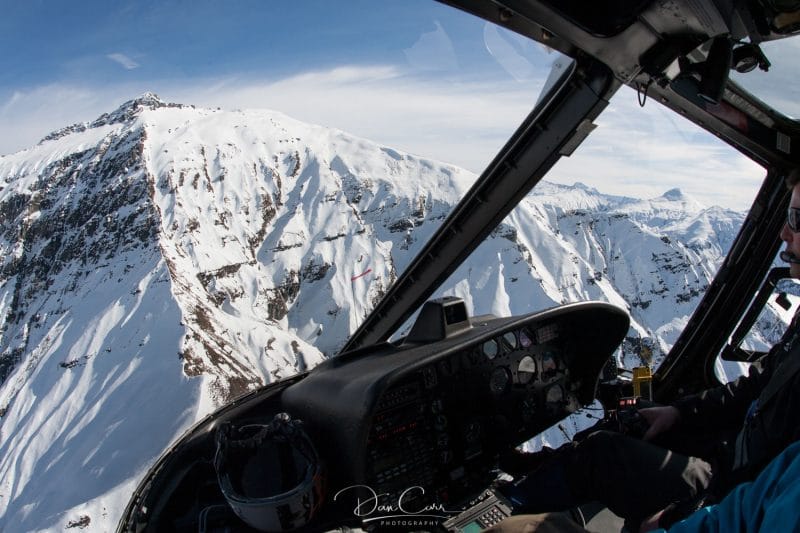
To utilize this technique some cameras will require you to reassign the function of an existing button on the back of the camera, and some cameras will actually have a dedicated button on the back that is designed to be enabled for use with back button focus. Obviously, if your camera has one of those buttons then it's a dead giveaway that your camera supports the feature! The button will be labelled AF-ON if there is one dedicated to the feature and if not then you'll have to reassign the function of another button such as AE Lock.
If you discover that your camera isn't capable of this technique, I think it's still important to read through this article and really understand what the potential benefits are. Personally, I do let the presence (or lack) of this feature influence my camera purchasing decisions. I'm such a firm believer in this feature that I simply wouldn't buy a camera that doesn't offer it.
How to Set up Back Button Focus
I have done my best to outline what I believe to be the average way to enable this feature with several different brands. I didn't want to skip over this part of the guide entirely, but the fact is that even within a single brand, there isn't one single method for enabling the feature. Sometimes the settings are in one tab of the menu, and then in their next camera, they have inexplicably been buried deeper in another tab. Even if the instructions in this section don't match 100% with what you are seeing on your camera, with a little lateral thinking, the menu item names and function descriptions should point you in the right direction.
Canon
- Open the menu system, navigate to the Orange set of tabs to a tab labelled Operation.
- Select the option near that bottom that is called Custom Controls.
- The first item in the list of controls is always the shutter button. Press the Set button on the camera to open the options for the shutter button
- Change the setting from the default setting of Metering and AF Start to just Metering Start
- Move down the Custom Control menu and choose the AF-ON button if there is one on your camera, if not, choose the AE Lock button(*). Press the Set button to open the menu.
- Change the function of that button to Metering and AF Start.
Nikon
- Select Custom Setting menu (red pencil icon).
- Select a – Autofocus.
- Select AF Activation.
- Change from Shutter/AF-ON to just AF-ON only, then press right and set Out-of-focus release to Enable. This is correct, although highly confusing in my opinion. What you have done is turn off the AF Activation from the shutter button. I think Nikon could have been clearer here.
- Go back to Custom Setting menu.
- Choose f – Controls.
- Choose Custom control assignment
- If your camera has a dedicated AF-ON button, choose this from the next menu and make sure the mode assigned to the AF-ON button is indeed the AF-ON function. You could conceivably have previously assigned it another function. If your camera does not have a dedicated AF-ON button, select the AE-L/AF-L button button instead, and change its function to AF-ON.
Sony
- Change the Pre-AF setting to OFF
- Change the setting AF w/shutter to OFF
- Open Custom Key Settings menu item
- If your camera doesn't have a dedicated AF-ON button, choose the AEL Button item in the menu (a6XXX series and below). If your does have an AF-ON button (a9, a7 III onwards), choose AF-ON from the button list instead. If you camera has neither (a7 II), choose the C3 button.
- Change the button setting toAF ON in the next menu.
Fuji
- In the menu system access theSetup section (wrench icon).
- Change the Shutter AF setting to OFF.
- Return to Setup section.
- Open Button/Dial Settings
- Select the Fn/AE-L/AF-L option to open the custom control menu.
- If your camera has an AF-ON button, choose this from the list and verify that the AF-ON function is applied to that button. If you do not have that button on your camera then you will need to choose either the AE-L button or the AF-L button to use instead. Choose whichever one you feel is most comfortable to hold your thumb on.
- Assign the AF-ON function to the button.
Dual Back Button Focus
Canon Users
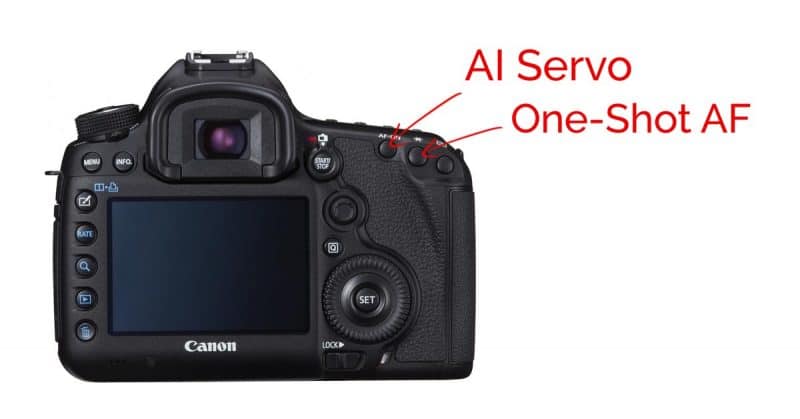
For Canon users who have either a 7D series, 5D series or 1D X series camera, there's a really cool feature that you can set up that I'm calling DualBack Button Focus. I've previous written a separate tutorial on how to set up dual back button focus for these cameras. Essentially it allows you to have two back buttons that activate autofocus, where one activates one-shot AF and the other activates AI Servo AF (continuous). Sadly the level of button customization needed to achieve this doesn't fall below the 7D series cameras in the lineup at the moment.
Nikon Users

This isn't quite the same as the above mentioned Canon trick, but it's still awesome and well worth knowing about if you have mastered single back button focus with your Nikon camera. Essentially with this technique, you can set up two different AF point selection modes on different buttons to allow you to quickly swap between them. You can read my guide to setting up double back button focus on a Nikon camera here.
Is Back Button Focus for Everyone?
I'm a firm believer that at some point everyone should try it, but it's important that you are already reasonably proficient in the use of your camera, and really ready to push yourself in terms of composition and technical operation. This is an advanced technique and there is a learning curve. If that learning curve gets itself tangled up with any other learning curves then you're just going to end up with a mess!
Source: https://shuttermuse.com/back-button-focus/
